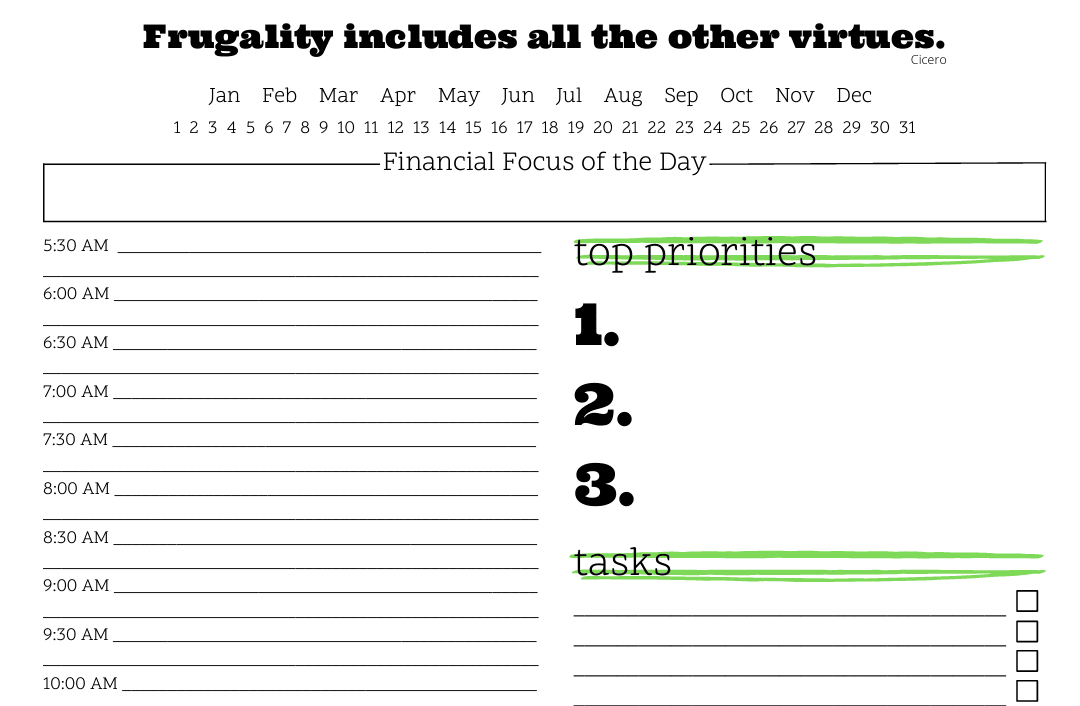This article may contain references to products or services from one or more of our advertisers or partners. We may receive compensation when you click on links to those products or services. Nonetheless, our opinions are our own.
The information presented in this article is accurate to the best of our knowledge at the time of publication. However, information is subject to change, and no guarantees are made about the continued accuracy or completeness of this content after its publication date.
One of the most fun and memorable things you’ll ever do is plan your wedding. There is so much to look forward to, from choosing the right flowers to finding the perfect place to hold the event. But before you get too excited and start having fun, you need to do one important thing: make a budget for the wedding. A good budget helps you stay on top of your spending and make smart, well-thought-out choices along the way. You can plan your dream wedding without worrying about going over budget if you set clear financial limits. We’ll show you the most important things you need to do to keep track of your wedding costs. It will give you useful tips, tools, and information that will help you take charge of your money. We will help you plan your dream wedding without going over budget, whether you’re just starting to plan or making changes to an existing plan.
- Setting Your Priorities for Your Wedding Budget
- The Breakdown of Wedding Costs
- Finding Creative Ways to Cut Expenses
- Tracking Your Spending and Staying on Budget
- Preparing for Unexpected Costs
- Reviewing and Adjusting Your Budget as Needed
- Conclusion
- Frequently Asked Questions
- Why is it important to create a wedding budget?
- What are the first steps to start drafting a wedding budget?
- How can we prioritize our wedding expenses?
- What should be included in a wedding budget breakdown?
- How can we handle unexpected expenses during wedding planning?
- What tips can help us stick to our wedding budget?
- Recommended Reads
Setting Your Priorities for Your Wedding Budget
One of the first and most important steps in creating a wedding budget is identifying your priorities. What matters most to you and your partner? Establishing your priorities ensures that you allocate your funds wisely and focus on the elements that will make the biggest impact on your special day. Important areas to consider include:
- Venue: Do you want a grand, elaborate location or a more intimate setting?
- Catering: Are you dreaming of a plated dinner, buffet, or something more casual like food trucks?
- Attire: Are you leaning toward a designer dress, or do you prefer something more budget-friendly?
- Photography: How important is capturing every moment of your day?
- Entertainment: Will you hire a live band, DJ, or create a unique experience for guests?
Once you clearly understand your priorities, you can allocate funds accordingly. Use the following simple table to visualize your budget distribution:
| Category | Priority Level | Estimated Budget |
|---|---|---|
| Venue | High | $4,000 |
| Catering | High | $3,000 |
| Attire | Medium | $1,500 |
| Photography | Medium | $2,000 |
| Entertainment | Low | $800 |
By defining what matters most, you’ll reduce stress and make decisions with confidence, ensuring that your wedding day reflects your vision while staying within budget.
The Breakdown of Wedding Costs
Wedding costs can add up quickly, and it can be hard to keep track of where your money is going if you don’t know where it’s going. A clear list of your expenses will help you stay on track and stay focused. Here is a common list of wedding costs:
| Category | Percentage of Budget |
|---|---|
| Venue | 30% |
| Catering | 25% |
| Photography & Videography | 10% |
| Attire | 10% |
| Flowers & Decor | 10% |
| Entertainment | 5% |
| Invitations & Stationery | 3% |
| Miscellaneous | 4% |
By categorizing your expenses, you can see where you might need to trim costs or where you could allocate a bit more money. For example, if your venue takes up a large portion of your budget, consider alternatives like a local park or a family home to save money. Many vendors also offer bundle packages that can reduce costs, so always ask for those options. The goal is to create a wedding that reflects your love but stays within your financial boundaries.
Finding Creative Ways to Cut Expenses
It’s easy to want to spend a lot of money on everything, but there are many creative ways to save money without ruining your big day. First, make a list of the things that are most important to you. If the venue is very important to you, think about using non-traditional spaces like community halls or outdoor venues, which are often cheaper. Moving your wedding to a Friday or Sunday can also lower the cost of the venue.
Other smart ways to save include:
- DIY options: From invitations to centerpieces, doing it yourself can be a fun and cost-effective way to add a personal touch.
- Bundling services: Many vendors, such as caterers, florists, and photographers, offer discounts when you book multiple services together.
- Leverage friends and family: Ask those with skills to help, whether it’s someone with photography experience or someone who can create beautiful decor.
Here’s a table with some creative cost-cutting ideas:
| Expense Category | Creative Cut Ideas |
|---|---|
| Venue | Consider non-traditional spaces and off-peak rates |
| Catering | Opt for a buffet or potluck-style reception |
| Decor | DIY projects; borrow decor from friends |
| Photography | Hire a recent photography graduate; look for package deals |
Creativity can be your best ally in budget management, allowing you to design a stunning wedding that stays within your financial limits while still capturing the essence of your celebration.
Voted "Best Overall Budgeting App" by Forbes and WSJ
Monarch Money helps you budget, track spending, set goals, and plan your financial future—all in one app.
Get 50% OFF your first year with code MONARCHVIP
Tracking Your Spending and Staying on Budget
To stay on top of your wedding budget, tracking your expenses is essential. Consider using budgeting apps or spreadsheets to log every expenditure, no matter how small. By monitoring your spending, you can adjust as needed and avoid going over budget.
Here’s a simple table to help track your spending:
| Category | Budgeted Amount | Actual Amount Spent |
|---|---|---|
| Venue | $5,000 | |
| Catering | $3,000 | |
| Attire | $1,500 | |
| Photography | $2,000 | |
| Decor | $1,200 | |
| Entertainment | $800 | |
| Miscellaneous | $500 |
Update this table regularly to stay on track. Regular monitoring helps you make necessary adjustments before it’s too late, reducing stress and allowing you to focus on the exciting parts of wedding planning.
Preparing for Unexpected Costs
Despite the best planning, unexpected costs may arise during your wedding planning process. From last-minute venue fees to vendor gratuities, it’s important to set aside a contingency fund for these surprises. A good rule of thumb is to reserve 10 to 15% of your overall budget for unforeseen expenses.
Here are some common unexpected costs to prepare for:
- Weather-related costs: Renting a tent or heaters for outdoor venues.
- Vendor gratuities: Tipping service providers like caterers or musicians.
- Last-minute guest additions: Adjusting catering or seating arrangements can increase costs.
- Alterations: Ensuring your wedding attire fits perfectly may require unexpected adjustments.
Here’s an example of how these additional expenses can add up:
| Expense Type | Estimated Cost |
|---|---|
| Weather-related Tents | $1,200 |
| Tips for Vendors | $400 |
| Last-Minute Catering | $600 |
| Dress Alterations | $250 |
By anticipating these costs, you can prepare for the unexpected and prevent surprises from derailing your wedding budget.
Reviewing and Adjusting Your Budget as Needed
Once your budget is set, it’s important to regularly review and adjust it as needed. Life is unpredictable, and costs may fluctuate or unexpected expenses might arise. By remaining flexible, you can effectively manage your finances throughout the planning process.
Here are some strategies for reviewing and adjusting your budget:
- Regular Check-Ins: Set aside time each month to review your spending. Are you on track? Are there areas where you might be overspending?
- Track Changes: Keep a record of any adjustments made to your budget. This helps you understand why these changes occurred and how to avoid them in the future.
- Prioritize Expenses: Identify which parts of your wedding are non-negotiable and which can be adjusted.
Here’s a guide to potential budget adjustments:
| Category | Original Budget | Adjusted Budget | Comments |
|---|---|---|---|
| Venue | $5,000 | $4,500 | Negotiated down payment |
| Catering | $3,500 | $4,000 | Upgraded menu option |
| Attire | $1,200 | $1,000 | Discounted dress purchase |
By staying mindful of your budget and remaining flexible, you can ensure your wedding day is joyful and memorable without compromising your financial well-being.
Conclusion
Making a wedding budget is an important step in making sure that your big day is both beautiful and affordable. You can plan a party that fits your budget by making a list of what you want to do, figuring out how much everything will cost, and coming up with creative ways to save money. You can enjoy planning while keeping your finances in order by keeping an eye on your spending, getting ready for unexpected costs, and reviewing your budget on a regular basis. With careful planning, you can have the wedding of your dreams and focus on what’s most important: celebrating your love with your loved ones.
Frequently Asked Questions
Why is it important to create a wedding budget?
A wedding budget helps you manage your finances, prevents overspending, and ensures that your money is allocated to the most important aspects of your wedding, allowing you to enjoy your special day without financial stress.
What are the first steps to start drafting a wedding budget?
Begin by determining your overall budget based on your finances and contributions from family or friends. Next, list all potential expenses, including venue, catering, and attire. This will help guide your financial decisions.
How can we prioritize our wedding expenses?
Start by discussing your must-haves versus nice-to-haves with your partner. For example, if the venue or entertainment is a top priority, allocate more funds there and adjust less important areas.
What should be included in a wedding budget breakdown?
A breakdown should include major expenses like venue, catering, attire, photography, entertainment, flowers, invitations, and decor. Make sure to account for both fixed and variable costs.
How can we handle unexpected expenses during wedding planning?
Set aside 10 to 15% of your budget for unexpected costs. This contingency fund will act as a safety net for any surprises that arise during planning.
What tips can help us stick to our wedding budget?
Regularly track your expenses using apps or spreadsheets. Communicate openly with your partner about finances and adjust your budget as needed to stay within your limits.

Reviewed and edited by Albert Fang.
See a typo or want to suggest an edit/revision to the content? Use the contact us form to provide feedback.
At FangWallet, we value editorial integrity and open collaboration in curating quality content for readers to enjoy. Much appreciated for the assist.
Did you like our article and find it insightful? We encourage sharing the article link with family and friends to benefit as well - better yet, sharing on social media. Thank you for the support! 🍉
Article Title: 6 Essential Steps to Plan Your Wedding Budget with Ease
https://fangwallet.com/2025/11/05/6-essential-steps-to-plan-your-wedding-budget-with-ease/The FangWallet Promise
FangWallet is an editorially independent resource - founded on breaking down challenging financial concepts for anyone to understand since 2014. While we adhere to editorial integrity, note that this post may contain references to products from our partners.
The FangWallet promise is always to have your best interest in mind and be transparent and honest about the financial picture.
Become an Insider

Subscribe to get a free daily budget planner printable to help get your money on track!
Make passive money the right way. No spam.
Editorial Disclaimer: The editorial content on this page is not provided by any of the companies mentioned. The opinions expressed here are the author's alone.
The content of this website is for informational purposes only and does not represent investment advice, or an offer or solicitation to buy or sell any security, investment, or product. Investors are encouraged to do their own due diligence, and, if necessary, consult professional advising before making any investment decisions. Investing involves a high degree of risk, and financial losses may occur including the potential loss of principal.
Source Citation References:
+ Inspo
There are no additional citations or references to note for this article at this time.











































